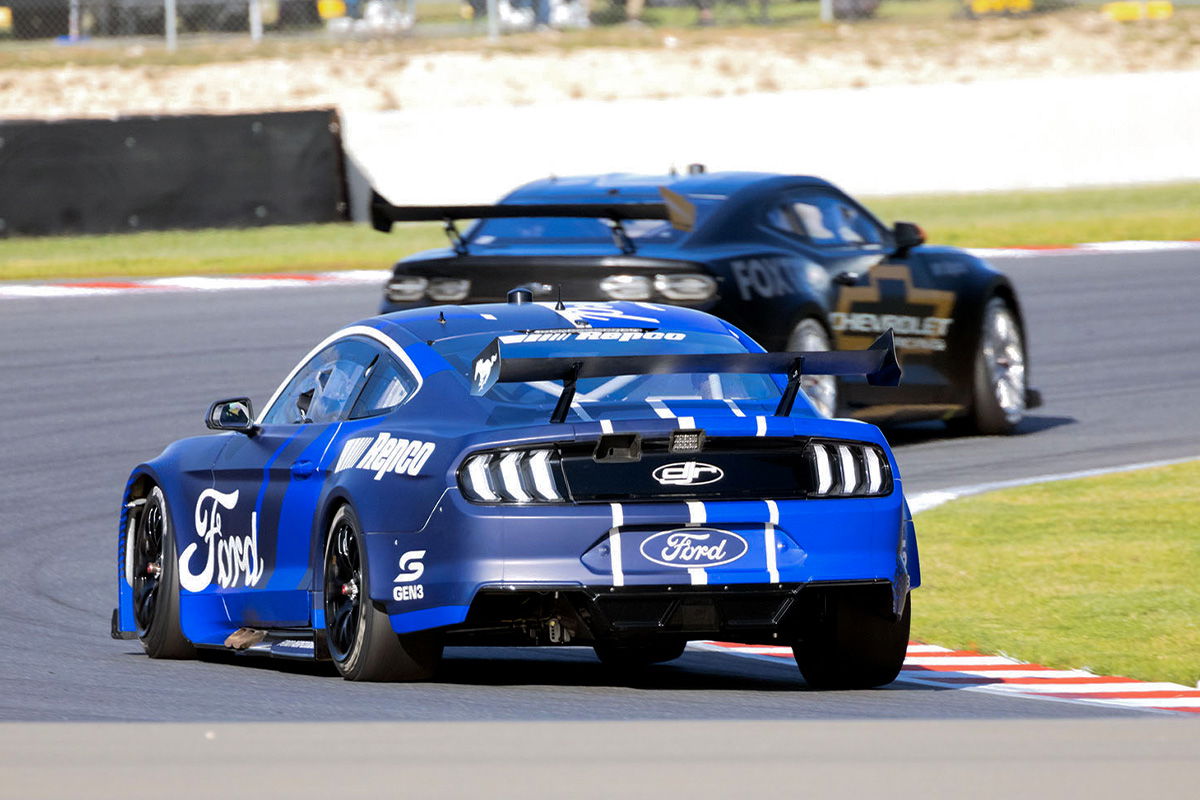

Supercars’ Head of Motorsport, Adrian Burgess, expects the lap times of Gen3 to closely match that of current-gen Supercar machinery.
The Repco Supercars Championship will enter a new era in 2023 with the introduction of the Gen3 Chevrolet Camaro and Ford Mustang.
It sees a move away from the 5.0-litre V8 engine, with a 5.7-litre General Motors powerplant and 5.4-litre Ford example.
Overall, there is less horsepower being produced by the engines compared to Gen2, though drivers have noticed an increase in torque.
Downforce has also been slashed on the Gen3 cars by somewhere in the region of 60 to 70 percent, which is hoped will enhance racing.
Feedback has indicated the new cars will put more of a focus on drivers, based upon the Camaro and Mustang prototypes that have been used in testing.
Despite the reduction in aerodynamics, meaning the Gen3 cars will be less glued to the road, Burgess believes lap times will vary circuit-by-circuit compared to the Gen2 machinery of current.
“Fundamentally it’s a different car,” Burgess told Speedcafe.com.
“The lap times, we believe what we’re seeing at the moment, will be very close to what we’ve currently got.
“Some tracks may be even a little bit quicker; some tracks may be a little bit slower depending on whether you’re aero dependent or power dependent.
“Whilst it hasn’t got the downforce, this car is a lot lighter than the current car.
“Yeah, it’s got less power than the current car [but it’s also] got a little bit less drag.
“So I think at Phillip Island when we tested they were as quick with this car as we were with a current car.
“When we were at Tassie the day after the event, we were four tenths slower with a new car than we were with the old car.”
Following a recent test, Todd Hazelwood said we are yet to unlock the full potential of the Gen3 cars, given the prototypes are only running generic set-ups.
Burgess agreed, and is confident the teams will be able to squeeze everything they can out of the cars when racing begins in March.
“We’re not pushing the boundaries; we’re not doing spring rates, ride heights, geometry changes,” he added.
“All those things that teams will get into and they will make the car quicker than it is today.
“So I think the jury is still out a little bit on whether it’s slower or quicker.
“That’s not our biggest focus; our biggest focus is on a good car that races well and provides good entertainment, good wheel-to-wheel racing.
“That’s the important thing. Whether it does a one minute 10, or a one minute 11, or one minute 12, the fan in the grandstand they’re not bothered about the lap time they want to see good racing.
“So the proof will be in the pudding is whether the car races well.”




















Discussion about this post